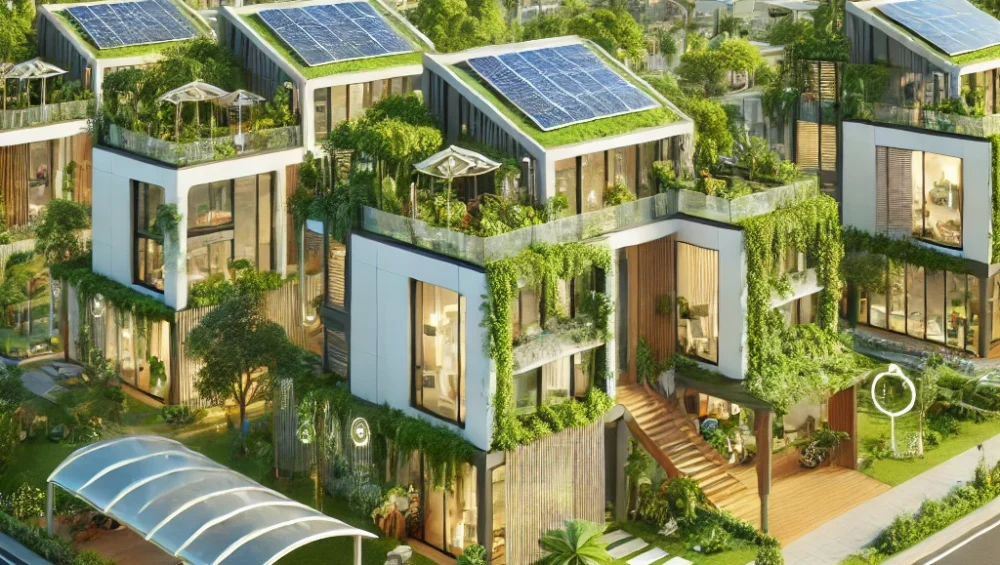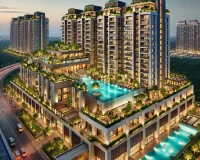Sustainable living is no longer just a trend; it has become a necessity for the future of our planet. With rapid urbanization and increasing environmental concerns, homebuyers are now looking for properties that align with their eco-conscious lifestyles. One Good Earth Properties is a concept that encapsulates sustainability, luxury, and innovation, providing homeowners with a green, comfortable, and energy-efficient living space.
This guide delves deep into the sustainable living aspects of One Good Earth Properties, exploring the key features, benefits, design principles, and how these properties contribute to a healthier environment. We will also link the discussion with Trehan Luxury Floors (TrehanLuxuryFloors.com) to showcase relevant sustainable real estate options available in Gurugram.
Understanding Sustainable Living in Real Estate
What is Sustainable Living?
Sustainable living refers to a lifestyle that minimizes environmental impact by reducing carbon footprints, conserving resources, and making eco-friendly choices. In real estate, this means constructing homes that are energy-efficient, resource-conscious, and designed for long-term sustainability.
Why is Sustainability Important in Real Estate?
- Reduces Energy Consumption: Sustainable homes use less electricity and water, reducing utility bills.
- Enhances Air Quality: Eco-friendly materials and ventilation systems improve indoor air quality.
- Boosts Property Value: Sustainable properties have higher resale value due to increased demand.
- Encourages a Healthier Lifestyle: Green spaces, better ventilation, and non-toxic materials contribute to better health.
- Promotes Responsible Urban Development: Sustainable buildings reduce the overall environmental impact of urban expansion.
- Reduces Dependence on Fossil Fuels: Energy-efficient designs minimize reliance on non-renewable resources.
Key Features of One Good Earth Properties
1. Eco-Friendly Construction Materials
Sustainable properties prioritize the use of recycled, non-toxic, and locally sourced materials such as:
- Bamboo & Reclaimed Wood: Used for flooring and furniture to minimize deforestation.
- Recycled Steel & Concrete: Reduces carbon footprint by cutting down new material production.
- Low-VOC Paints: Prevents indoor air pollution, ensuring a healthier home environment.
- Thermal Mass Materials: Natural stone, rammed earth, and insulated concrete maintain indoor temperatures efficiently.
2. Energy Efficiency & Renewable Energy Sources
One Good Earth Properties integrate renewable energy sources and smart energy solutions:
- Solar Panels: Reduce reliance on non-renewable energy sources.
- Smart Lighting & Sensors: Automated lighting systems lower electricity wastage.
- Energy-Efficient Windows: Double-glazed windows help maintain indoor temperatures.
- High-Performance Insulation: Keeps homes warm in winter and cool in summer.
- Geothermal Heating and Cooling: Uses the earth’s natural temperature regulation for energy efficiency.
3. Water Conservation & Management
Sustainable properties use innovative water conservation techniques:
- Rainwater Harvesting: Captures rainwater for reuse in gardening and toilets.
- Low-Flow Fixtures: Reduces water wastage in taps, showers, and toilets.
- Wastewater Recycling: Greywater treatment systems allow water reuse for landscaping.
- Permeable Pavements: Absorb rainwater, reducing runoff and improving groundwater levels.
4. Green Landscaping & Biodiversity
One Good Earth Properties promote green surroundings and biodiversity conservation:
- Vertical Gardens & Green Roofs: Enhance air quality and reduce urban heat.
- Native Plant Landscaping: Requires less water and maintenance.
- Community Gardens: Encourages organic farming and a self-sustaining ecosystem.
- Bee and Butterfly Habitats: Encourage pollination and biodiversity in urban areas.
5. Smart & Sustainable Design Principles
- Cross-Ventilation Design: Maximizes natural airflow, reducing AC dependency.
- Optimal Building Orientation: Maximizes natural light and minimizes heat gain.
- Use of Passive Solar Heating: Homes are designed to utilize the sun’s energy efficiently.
- Living Walls: Improve air quality by absorbing pollutants and reducing noise.
The Economic Benefits of Sustainable Properties
Sustainability is not only beneficial for the environment but also offers long-term financial advantages:
| Benefits | Economic Impact |
| Lower Utility Bills | Solar panels and energy-efficient appliances save on electricity bills. |
| Higher Property Value | Green-certified homes have a 10-20% higher resale value. |
| Government Incentives | Tax benefits and subsidies for adopting renewable energy. |
| Reduced Maintenance Costs | Durable eco-friendly materials require less upkeep. |
| Lower Healthcare Costs | Healthier indoor environments reduce respiratory issues and medical expenses. |
| Long-Term Investment Gains | Sustainable properties are less likely to depreciate in value. |
Government Policies & Initiatives Supporting Green Living
The Indian government has introduced several initiatives to promote sustainable housing:
- Green Rating for Integrated Habitat Assessment (GRIHA): Certification for energy-efficient buildings (Learn More).
- Pradhan Mantri Awas Yojana (PMAY): Promotes affordable and eco-friendly housing.
- Solar Rooftop Subsidy Scheme: Encourages solar energy adoption (MNRE Government Website).
- Energy Conservation Building Code (ECBC): Encourages energy-efficient construction standards.
Fun Facts About Sustainable Homes
- Buildings account for nearly 40% of global carbon emissions — adopting green building practices can reduce this significantly.
- A single solar panel can reduce carbon emissions equivalent to planting 100 trees annually.
- Bamboo grows 30 times faster than trees, making it a highly renewable building material.
- Green roofs can reduce indoor temperatures by up to 5°C, cutting down AC usage.
- LED bulbs use 80% less energy than incandescent bulbs, significantly reducing energy bills.
Pro Tips for Choosing a Sustainable Home
- Check for Green Certifications: Ensure the property has GRIHA or LEED certification.
- Evaluate Energy Efficiency: Look for solar panels, insulated walls, and LED lighting.
- Assess Water Management Systems: Rainwater harvesting and low-flow fixtures are essential.
- Prioritize Natural Ventilation: Proper airflow reduces energy consumption.
- Look for Smart Technology: Automated lighting and water management enhance sustainability.
- Consider Proximity to Public Transport: Reduces dependence on private vehicles and lowers emissions.
- Choose Eco-Friendly Interior Design: Sustainable furniture and non-toxic materials enhance green living.
Conclusion: Embracing a Greener Future
One Good Earth Properties symbolize the future of real estate, where luxury meets sustainability. Investing in such properties not only benefits the environment but also ensures long-term cost savings and a healthier lifestyle. With Trehan Luxury Floors, you can embrace a sustainable lifestyle without compromising on luxury.
Explore sustainable housing options today at TrehanLuxuryFloors.com and take a step towards a greener tomorrow!
Related Blog:
For more insights on sustainable real estate, check out our blog on Eco-Friendly Home Design Trends.




